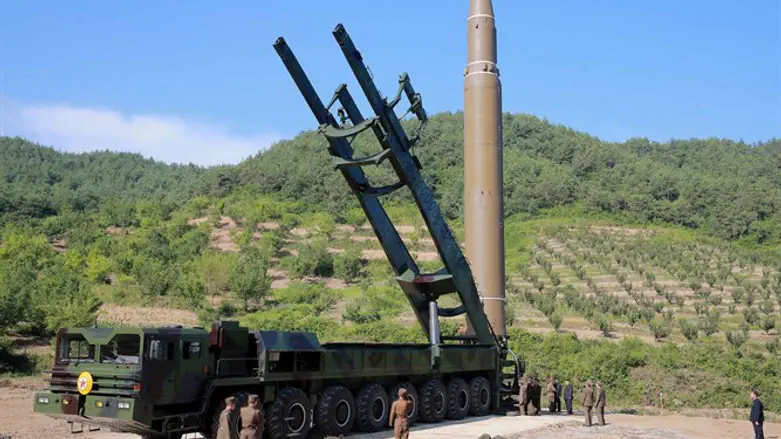
US missile defense systems may not protect against a North Korean nuclear attack, an expert in the field said Wednesday.
According to Global Security Program at the Unite of Concerned Scientists Co-director physicist David Wright, the $40 billion Ground-based Midcourse Defense System has only a 50% success rate.
"You simply wouldn’t rely on it," Wright told The Post. "It has been tested 18 times in the last 12 to 15 years, and even under the controlled circumstances of tests, it has failed half the times."
Though the Air Force in May did successfully launch an interceptor, that was the first time it had been tested against the type of missile North Korea tested earlier this week. And according to Wright, the system won't work well in an emergency, since it can't figure out which type of missiles Kim Jong-un will use.
The US currently has 36 ICBM interceptors — 32 in Alaska at Fort Greely and four in California at Vandenberg Air Force Base. The number is expected to increase to 44 by the end of 2017.
Meanwhile, Pentagon Spokesperson Navy Captain Jeff Davis said, "We do have confidence in our ability to defend against the limited threat, the nascent threat that is there."
"It's something we have mixed results on. But we also have an ability to shoot more than one interceptor."
"Over the next four years, the United States has to increase its current capacity of our deployed systems, aggressively push for more and faster deployment," Missile Defense Advocacy Alliance Founder Riki Ellison said.
One missile expert, John Schilling, said North Korea's nuclear missile development is proceeding faster than expected but "it will probably require another year or two of development before this missile can reliably and accurately hit high-value continental U.S. targets, particularly if fired under wartime conditions."
According to Phil Coyle, who served under the Clinton administration as the Pentagon's chief weapons tester and under Obama in the White House Office of Science and Technology Policy, "Three of the previous four [tests] had failed — that is a 75 percent failure rate."
He also said that even with the system's most recent success, "two of five is 40 percent. Forty percent is not a passing grade."
"These will take years and years — they are talking 2030. And meanwhile, North Korea keeps getting better and better. The problem is technology is just not providing us the solutions. There is no technical solution. There really isn’t a military solution to North Korea. We’ve just got to engage with North Korea."
Missile Defense Agency Vice Admiral James Syring said the US has "been on a journey over the last at least five to six years to improve the reliability of the entire [GMD] system."
"We are not there yet. I would not say we are comfortably ahead of the threat. I would say we are addressing the threat."
